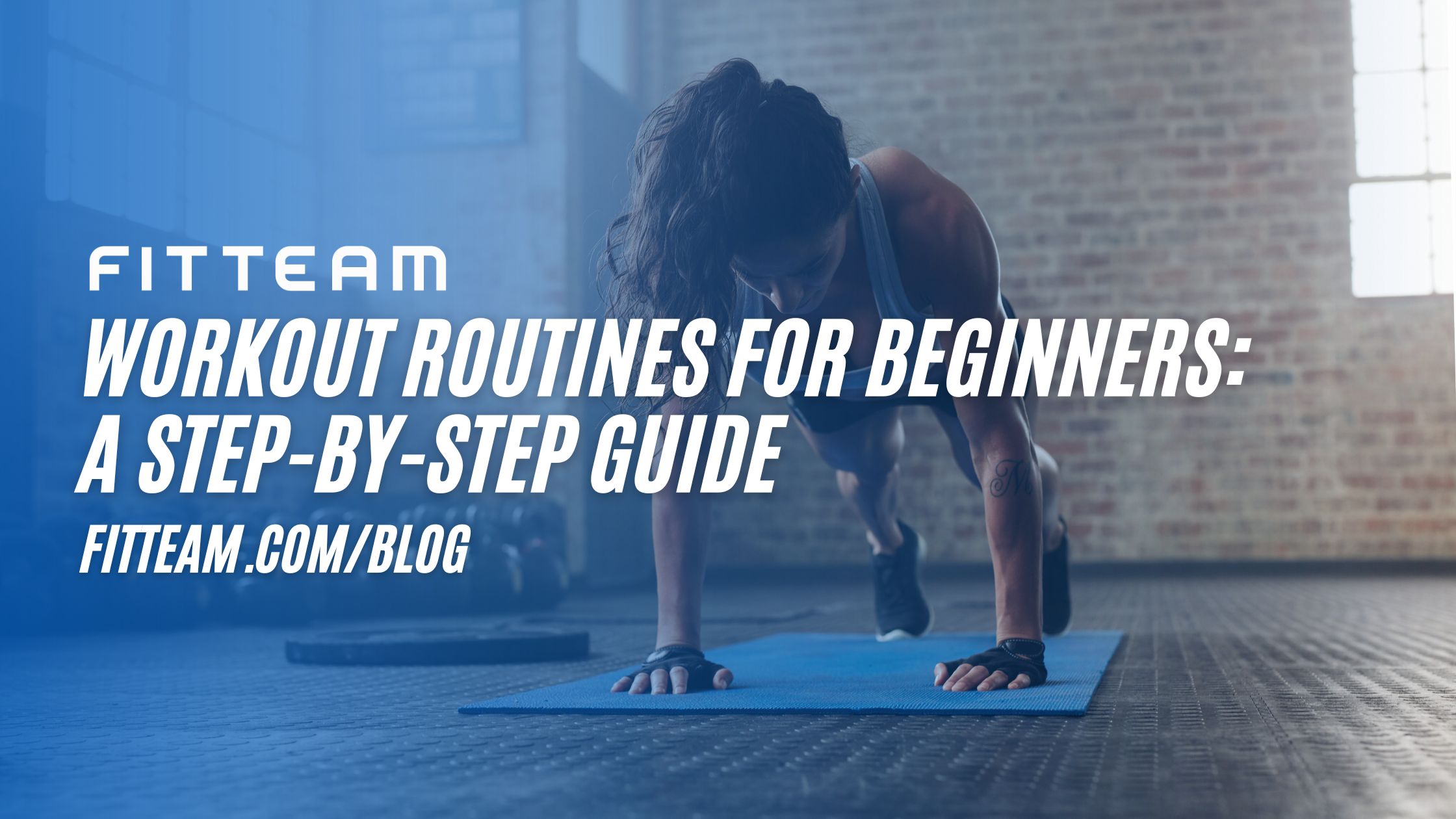
14 Sep Workout Routines for Beginners: A Step-by-Step Guide
Workout Routines for Beginners: A Step-by-Step Guide
Starting a workout routine can be overwhelming, especially for beginners. Whether you’re looking to improve your fitness level, lose weight, or just lead a healthier lifestyle, having a structured workout plan is key. This guide will take you through the essentials of building a workout routine that works for you, with an easy-to-follow, step-by-step approach.
Step 1: Set Clear Goals
Before you begin any workout program, it’s important to define your fitness goals. Are you trying to build muscle, lose fat, or improve your overall health? Setting clear goals will help you stay focused and choose the right exercises for your needs.
- Short-term goals: Example: “I want to work out 3 times a week for 30 minutes.”
- Long-term goals: Example: “I want to lose 10 pounds in 3 months” or “I want to run a 5K.”
Step 2: Choose the Right Type of Workout
Once you know your goals, the next step is to choose a workout routine that aligns with them. For beginners, it’s best to start with a combination of strength training and cardio.
- Strength Training: Helps build muscle and improve metabolism. Start with bodyweight exercises like squats, push-ups, and lunges. As you get stronger, you can add resistance with dumbbells or resistance bands.
- Cardio: Boosts heart health and helps burn calories. For beginners, simple cardio exercises like walking, jogging, or cycling for 20-30 minutes a few times a week is a great way to start.
Step 3: Plan Your Routine
A beginner-friendly routine doesn’t have to be complex. It’s more important to be consistent. Aim for 3-4 workouts a week that combine strength and cardio. Here’s an example beginner workout schedule:
- Day 1: Strength Training (Full Body)
- Squats: 3 sets of 12 reps
- Push-ups: 3 sets of 10 reps
- Lunges: 3 sets of 12 reps (each leg)
- Plank: 3 sets of 20 seconds
- Day 2: Cardio
- 30-minute brisk walk or light jog
- Day 3: Rest or Active Recovery
- Light stretching, yoga, or walking
- Day 4: Strength Training (Upper Body Focus)
- Dumbbell Rows: 3 sets of 12 reps (each arm)
- Shoulder Press: 3 sets of 12 reps
- Bicep Curls: 3 sets of 12 reps
- Plank: 3 sets of 30 seconds
- Day 5: Cardio
- 30 minutes of cycling or a treadmill session
- Day 6: Rest
- Day 7: Full Body Stretch/Yoga
Step 4: Start Slow and Progress Gradually
As a beginner, it’s easy to get excited and overdo things early on, but it’s important to pace yourself. Start with lighter weights and shorter cardio sessions, gradually increasing intensity as your fitness improves.
- Progressive overload: This means increasing weight, reps, or duration gradually over time. For example, if you start squatting with just your bodyweight, you can add dumbbells after a few weeks to continue challenging your muscles.
Step 5: Prioritize Recovery
Rest and recovery are just as important as your workout sessions. Your muscles need time to repair and grow, especially if you’re new to exercising. Aim for 7-8 hours of sleep each night, and take rest days between workouts to avoid overtraining.
- Stretching and mobility: Incorporating a few minutes of stretching after your workout can help improve flexibility and reduce soreness.
Step 6: Stay Consistent and Track Your Progress
Consistency is key in any fitness journey. Try to stick to your workout plan for at least 4-6 weeks before adjusting it. Tracking your workouts—either through an app or a simple notebook—can help you stay motivated and see your progress over time.
Beginner-Friendly Workout Tips:
- Warm up before each session: Spend 5-10 minutes warming up with light cardio or dynamic stretches.
- Focus on form: Proper form is crucial for preventing injuries and getting the most out of each exercise.
- Stay hydrated: Drink water before, during, and after your workout.
- Listen to your body: If something feels too challenging or painful, stop and reassess your form or modify the exercise.
Conclusion
Starting a workout routine doesn’t have to be complicated. With a well-planned structure, gradual progression, and consistency, you can build a solid fitness foundation that will set you on the path to achieving your goals. Whether it’s strength training, cardio, or a combination of both, the most important thing is to stay committed and enjoy the process!

